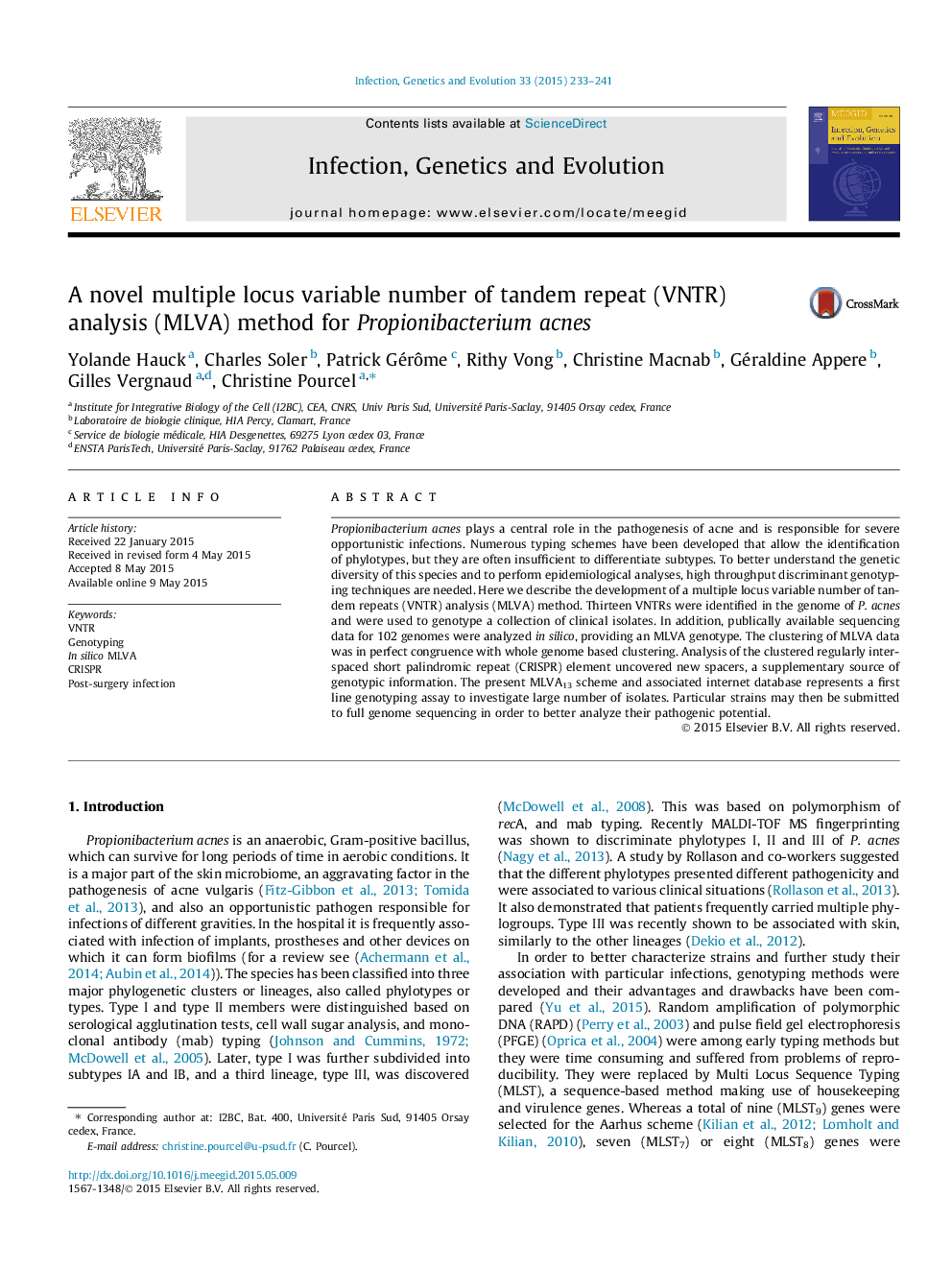| Article ID | Journal | Published Year | Pages | File Type |
|---|---|---|---|---|
| 5908872 | Infection, Genetics and Evolution | 2015 | 9 Pages |
â¢We searched the genome sequence of 102 P. acnes isolates for VNTRs.â¢Clustering the strains according to their in silico VNTR profiles is in agreement with MLST clustering.â¢Genotyping of a collection of clinical isolates allows identification of closely related strains.â¢The novel MLVA genotyping scheme is informative and can be used to perform epidemiological studies.â¢CRISPR analysis provides additional phylogenetic information and uncovers novel spacers.
Propionibacterium acnes plays a central role in the pathogenesis of acne and is responsible for severe opportunistic infections. Numerous typing schemes have been developed that allow the identification of phylotypes, but they are often insufficient to differentiate subtypes. To better understand the genetic diversity of this species and to perform epidemiological analyses, high throughput discriminant genotyping techniques are needed. Here we describe the development of a multiple locus variable number of tandem repeats (VNTR) analysis (MLVA) method. Thirteen VNTRs were identified in the genome of P. acnes and were used to genotype a collection of clinical isolates. In addition, publically available sequencing data for 102 genomes were analyzed in silico, providing an MLVA genotype. The clustering of MLVA data was in perfect congruence with whole genome based clustering. Analysis of the clustered regularly interspaced short palindromic repeat (CRISPR) element uncovered new spacers, a supplementary source of genotypic information. The present MLVA13 scheme and associated internet database represents a first line genotyping assay to investigate large number of isolates. Particular strains may then be submitted to full genome sequencing in order to better analyze their pathogenic potential.
